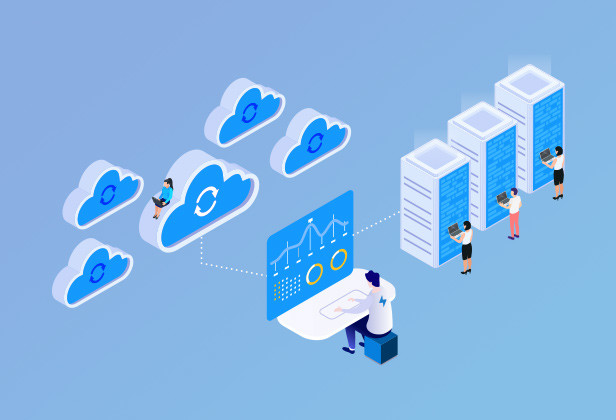Streaming video has been one of the most widely used services in our lives for a long time and there are many online video platforms and also vendors which offer such services to be launched. Considering many platforms and vendors which deliver such demands, pricing differs in between what is charged while providing the service. Eventually, there are a number of factors you need to consider when it comes to calculating Video Streaming Project costs, and we will focus on those in general and also specifically on Ant Media Server offerings.
Latency needs
The first thing should be to determine your latency requirements, and then ask if your service requires interactivity or not. For instance, if you’re live-streaming a webinar, conference, presentation slide, or some other things and if there would be a plan to take questions from the audience, then you should consider ultra-low latency and eventually WebRTC as a streaming protocol. Other use cases include online video games, online casinos, sports betting, auctions, video chat, etc., all of which require the audience to interact close to real time. Or you can even consider surveillance cameras that perform online monitoring and require intervention in real time by security or watch guards.
However, if you plan to have a broadcasting service that requires no interactivity, then you will only require low latency, and so eventually streaming protocols LL-HLS or LL-DASH should be more than enough.
Cost perspective, if you design your project on ultra-low latency solution, your cost base will be higher than low latency solution as minimized latency requires more investment on computing hardware and eventually streaming software. With rough estimation for a single server, at least you can have 1 to 5 larger capacity scale for viewers with Low Latency solution.
How Your Service Scale
After you determine your latency requirements, you should start considering your scale. Based on the service requirements that you plan to provide, many parameters need to be defined that will factor into your solution.
Will your planned service be global or local? Will it be used by dozens or hundreds or many thousands and millions? Will it require HD video, or is SD acceptable? Will you require streaming-only at certain times of a day or week, or will the service be 24/7?
Global Existence
According to your answers above questions, pricing will vary based on how you offer your service. For instance, if you plan to offer your service globally, then you should design your service to be reachable global literally and if you will prefer Low Latency Streaming for your service, then your cost will be less than using an ultra Low Latency Streaming global solution. Mainly, it’s because of using global CDNs which already support HLS or CMAF protocols via replication and there are many price competitive CDNs in the market that you can easily integrate with one click. Their costs are much cheaper than using CDNs which offers re-streaming of WebRTC protocol.
Streaming Data Consumption
Another criteria could be the number of audiences that will use your service. It’s mainly because of data consumption while streaming. If you will have multi-thousands of viewers, then it should be wise to look for a public data network that offers the cheapest data streaming cost or no cost at all. For instance, Ant Media’s partner company OVH is one of the well-known global data centers and they don’t ask a penny for data streaming cost at all. In addition, the video quality that your service will offer could be HD or SD, but it should be kept in mind that better video quality requires almost 50% more streaming data consumption.
Service Time
One of the most significant criteria while calculating the cost is if your service will be up and running all the time or it will be used once in some time. For instance, if your service is planned to be used from time to time, then public cloud networks such as AWS and Azure would be a suitable environment to keep your cost as low as possible. It’s mainly because of paying capability offered by those networks for only per hour usage for the infrastructure, service, and data consumption.
On-Premise or Hosted or OVP Solution
One of the critical criteria for your service to be considered is if it would be offered via On-Premise or Hosted or OVP Solution.
If you have no operational experience or plan to build your model based on an outsourced way of working to keep your initial costs low, Hosted or OVP Solution could be a good fit to start with. However, from the cost perspective, they could be more expensive than on-premise solutions as the additional cost is automatically reflected on operating platforms and also infrastructure. Therefore, it should be considered in which way to move forward based on your business plan.
Features
Another criteria, maybe one of the most crucial ones, is the platform or vendor selection. Do they really support all the features that your project requires and have a charging model flexible enough to keep your initial cost low? Some of the key features that vendor or platform should support are listed below for your reference,
- Compliant with the latest proven ultra-low or low latency streaming technologies, with fallback mechanisms in between
- Enriched with features bundling together into a single product package with backward compatibility
- Supports dynamic adaptive bitrate management, targeting both low-bandwidth and high-bandwidth end users
- Provides mobile SDKs as part of offering to enable quick delivery of solution
- Demonstrates proven performance with low scale infrastructure
- Exposes well defined APIs to manage and integrate your service quickly and efficiently
- Supports all type of encoding formats which are mostly valid and/or used in the market
- Is capable of scaling up vertically and horizontally in auto scaling mode
- Works in fully transparent mode to expose all chargeable elements to give an overall idea about initial and operational costs
- Provides flexible offerings on public cloud networks such as AWS, Azure, Digital Ocean, etc., as well as private clouds or even on premise solutions,
- Offers various pricing mechanisms such as hourly, monthly, or annual-based charging or a perpetual license that can cover any consumer in the market
- Has a well-organized, competent, and agile team offering support and professional services worldwide
- Is a global player with well-known and reputable customers
Summary
We have gone through many selection criteria that will help you to make cost analysis for Video Streaming Project.
The final and most crucial decision is to find a partner who can deliver your requirements with the best combination of price and performance.
Ant Media is one of the well-known companies in the live streaming market, with more than 3,000 instances running worldwide and a broad range of customers.
Today, Ant Media delivers all the required features explained above —and even more bundled within its product—to ensure that our customers take this journey with us to find the best Price vs Performance solution in the market.
At last, if you want to calculate your cost about your Video Streaming Project, please look at our cost calculator which provides our offerings with all cost information based on your requirements.




